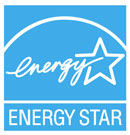ENERGY STAR was created in 1992 by the Environmental Protection Agency. It is an international standard for energy efficient consumer products. The United States, European Union, Australia, Canada, Japan, New Zealand, and Taiwan have all adopted the program. Devices which bear the ENERGY STAR mark typically use 20-30% less energy than required by federal standards. They also issue ratings that range on a scale from 1-100 for the energy efficiency of buildings, with those scoring 75 or higher qualifying for the ENERGY STAR mark.

ENERGY STAR was originally designed for computer and printer products. However, it has since expanded to include office equipment, lighting, home electronics, residential heating and cooling systems, and industrial buildings. in 1999, the EPA began awarding small businesses who reduced waste, conserved energy, and recycled using the resources and ideas of the ENERGY STAR program. In 2006, the EPA estimated that ENERGY STAR saved $14 in energy costs. In 2008 the EPA announced the Green Power Partnership program, which was designed to encourage the use of renewable power sources.


